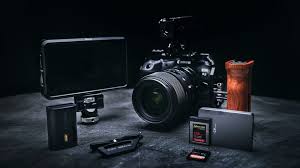In the world of photography, a reliable battery is as essential as the camera itself. Canon EOS cameras are designed for high performance, but to capture the best moments without interruption, you need a battery that offers optimal power and endurance. Finding the right battery not only maximizes the camera's efficiency but also ensures that you’re ready to shoot whenever inspiration strikes. Here’s a guide to help you choose the ideal Canon EOS battery for extended and reliable photography sessions.
Understanding Canon EOS Battery Types
Canon EOS cameras use different battery types based on the model, and it's crucial to select the one that matches your camera’s requirements. Here are some common battery options for Canon EOS models:
-
LP-E6 and LP-E6N
Commonly used in mid-to-high-end models like the Canon EOS 5D series and EOS 6D, LP-E6 and LP-E6N batteries are known for their durability and long battery life. -
LP-E8 and LP-E10
These are typically used in entry-level Canon EOS models, like the Rebel T3i and Rebel T5. They offer good performance for beginners and casual photographers. -
LP-E17
This battery is designed for newer models like the Canon EOS 750D and 800D. The LP-E17 offers moderate capacity and is ideal for photographers who need a reliable battery for extended use. -
LP-E12
Compact and lightweight, this battery is suitable for Canon EOS M series models, making it a great choice for photographers on the go. -
LP-E19
Built for power-hungry professional cameras like the EOS-1D X Mark II, LP-E19 batteries provide extensive shooting time and are designed for the most demanding photographers.
Tips for Choosing the Right Canon EOS Battery
1. Check Compatibility
Always confirm that the battery you’re purchasing is compatible with your camera model. Canon provides a compatibility chart that helps you identify the correct battery.
2. Consider Battery Capacity
Battery capacity, measured in milliamp hours (mAh), determines how long a battery can last. Higher mAh indicates longer battery life, making it ideal for travel or long photography sessions.
3. Genuine vs. Third-Party Batteries
While third-party batteries are often cheaper, Canon genuine batteries are optimized specifically for Canon EOS cameras, providing better compatibility and performance.
4. Evaluate Your Photography Needs
If you’re a casual photographer, standard Canon batteries like the LP-E8 or LP-E10 may be sufficient. For professionals who shoot continuously, high-capacity options like the LP-E19 provide the power you need.
5. Consider Accessories
Some Canon EOS batteries support additional accessories, like battery grips, which can double your camera’s battery life and offer a comfortable grip during long sessions.
Essential Tips for Extending Canon EOS Battery Life
To get the most out of your battery, it’s essential to follow best practices that extend its lifespan:
- Turn off unnecessary settings like Wi-Fi or GPS when not needed.
- Adjust screen brightness to a lower setting to conserve power.
- Use sleep mode to automatically turn off the camera after a period of inactivity.
- Keep batteries at optimal temperature; avoid exposing them to extreme cold or heat.
- Charge the battery fully before using it to ensure maximum performance.
FAQs
Q1: Can I use a third-party battery with my Canon EOS camera?
A: Yes, but be cautious. Third-party batteries may not offer the same reliability as Canon’s original batteries. Canon’s batteries are optimized for safety, compatibility, and performance with Canon cameras.
Q2: How can I tell if a Canon battery is genuine?
A: Canon batteries have unique serial numbers and Canon holograms. Check for these markings and purchase only from reputable sellers like Technamart to avoid counterfeit products.
Q3: What is the difference between LP-E6 and LP-E6N batteries?
A: The LP-E6N is an improved version of the LP-E6, providing a slightly higher capacity. It’s backward compatible, meaning it can be used in older cameras designed for the LP-E6.
Q4: How many shots can I get on a full battery charge?
A: This varies by battery type, camera model, and settings. On average, an LP-E6N battery in a Canon EOS 5D Mark IV can capture around 900-1,000 shots per charge.
Q5: Should I remove the battery from my camera when not in use?
A: Yes, if you’re not planning to use your camera for an extended period. Removing the battery can prevent slow discharge and help maintain its lifespan.
Conclusion
Choosing the right battery for your Canon EOS camera can make all the difference in your photography experience. Whether you need long-lasting power for professional shoots or a reliable backup battery for travel, understanding Canon’s battery options will help you make the best choice. For genuine Canon batteries and expert advice, visit Technamart’s collection of Canon EOS camera batteries available in the UK.

